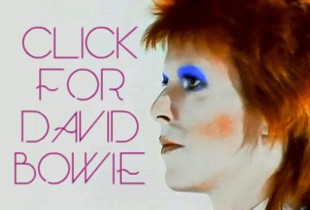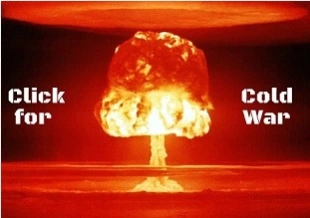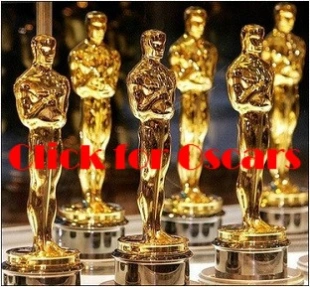Arresting hero: the evolution of the TV detective
‘Ello, ‘ello, ‘ello: George Carter and Jack Regan in The Sweeney from the ’70s (left); Sam Tyler and Gene Hunt in Life On Mars from the ’00s… and the ’70s
You’re nicked! More like you’re hooked! For the last 40 or so years, fictional drama on our television sets and the solving of crimes have gone hand-in-hand. Together they’ve proved such a winning combo they’ve made household names of the very characters who have done the crime-solving, the villain-chasing, the car-chasing and, ultimately, the arresting. Indeed, most of the time, we’ve been so fascinated, nay, beguiled by these (often) anti-heroes that the dramas themselves have been created just to provide a playground in which the detectives have been allowed to run around. And thank goodness for that.
The long arm of the law was on TV screens on both sides of the Atlantic right from the off, of course – many a TV drama from the year dot would feature a policeman, if the plot needed one. Then in the ’50s and into the ’60s, UK TV devoted two drama series to the copper, Dixon Of Dock Green (1955-76) and Z-Cars (1964-78). Both were long-running and undeniably popular, the former focusing on uniform policing out of a London East End station and the latter on Northern England patrol policing. Z-Cars was grittier than Dixon Of Dock Green, for sure, but then the original early episodes of British soap Coronation Street were gritty for their day too.
Over in the States, ’50s and ’60s TV crime drama saw the likes of Dragnet (1951-59 and 1967-70), The F.B.I. (1965-74), The Fugitive (1963-67), which was later adapted by Hollywood into the 1993 Harrison Ford starrer of the same name, and The Untouchables (1959-63), which also was ‘adapted’ into a film of the same name – in 1987 and famously featuring Sean Connery. Sure, all of these series were popular and, like their British counterparts, groundbreaking in their way, but none of them specifically focused on their detectives as individual, unique characters; moreover, in The Fugitive, the actual fugitive was the protagonist.
But in the late-’60s things slowly began to change, as another police drama captured the public’s imagination and, frankly, never let it go. It was unlike anything that had gone before. It was pseudo-glamorous, indefatigably cool and had an awesome theme tune (three requirements that many a later cop show would attempt to emulate). It was Hawaii Five-O. And it was dynamite.
Aside from repeats – or reruns – over the decades, it’s estimated that Hawaii Five-O’s first run and syndication was seen by a staggering 400 million people around the world. The series ran from 1968-80 and featured former US naval officer Steve McGarrett and his partner Danny ‘Danno’ Williams of Hawaii’s fictional state police force. In truth, however, rather like the lead character from Dragnet, McGarrett was something of a dull plod seemingly married to his work (despite his cool shades), and the show is best remembered for his episode-closing catchphrase ‘Book ’em, Danno’ and the film of outrigger canoeists battling the surf that the catchy theme tune played over as the end credits rolled. Really, the truth is that when it comes to the TV detective, everything actually changed in the ’70s.
Telly on telly: Kojak brought New York neo-realism – and lollipops – to the small screen
And it may have been The French Connection’s fault. When it was released in 1971, William Friedkin’s hard-nosed thriller set on the mean streets of New York caused a sensation – and rightly won the big Oscars that year. Featuring Gene Hackman in career-best form as the uncompromising narcotics detective ‘Popeye’ Doyle, ably supported by Roy Scheider’s sidekick, it was an utter kick in the nuts for presenting police work and policeman on the screen, big or small. Perhaps unsurprisingly, it was entirely based on the experiences of two real-life NYPD detectives, Eddie Egan and Sonny Grosso – both of whom actually appeared in the film; well, it was Hollywood, after all. So how was it this film had such a catalyst-like effect on the small-screen detective then? Well, could you imagine Kojak ever making it on to the box if The French Connection hadn’t been a hit?
To my mind, Kojak changed everything. Like Hawaii Five-O, it was cool, had a cracking theme tune and a title sequence veering on the ludicrous (big letters spelling out the protagonist’s name would flash on screen in time with the pounding music), but it was also hard-edged, neo-realistic stuff and, undeniably, was driven along by its unusual, intriguing and charismatic central character – after which it was named, lest we forget. And Lt Theo Kojak, played by the late, great Telly Savalas, is unforgettable. No, actually, he’s iconic.
A snappily be-hatted, or otherwise just plain bald, Greek Noo Yawker, Kojak was the smartest, swankiest cat on the force, and seemingly forever had a lollipop in his mouth (a motif that was apparently introduced to bring the series in line with the growing public perception that cigarettes are harmful, given the character originally smoked instead). He also possessed surely the greatest catchphrase of any ’tec on the box: ‘Who loves ya, baby?’. Everybody loved Kojak – and everybody still does. It originally ran for five series from 1973-78 and was followed by two TV movies The Belarus File (1985) and The Price Of Justice (1987), and one final series in 1989, in which the eponymous hero commanded a wet-behind-the-ears sidekick.
With Kojak, it seemed, the floodgates opened. Telly schedules were chock-full of US detective shows in the ’70s; you couldn’t move for them. There was Cannon (1971-76), an overweight detective; Columbo (1971-94), a crumpled detective; Ironside (1967-75), a detective in a wheelchair; McCloud (1970-77), a cowboy detective in New York; The Rockford Files (1974-80), a small-time detective who was an ex-con; and Quincy, ME (1976-83), a detective whose gimmick was that he was, er, ugly.
Nah, that’s selling Quincy short – and then some. Played by Jack Klugman, star of the classic courtroom drama 12 Angry Men (1957) and the TV version (1970-75) of The Odd Couple, Quincy was a San Francisco pathologist who became so embroiled in solving murder cases that ended up on his slab he often couldn’t stop himself helping vulnerable and desperate people who were wrapped up in each episode’s plot. Being a pathologist and, well, not endowed in the looks department, it certainly shouldn’t have convinced that Quincy was such a hit with the ladies, but somehow it never seemed to rankle – and neither did the far from credible scenarios in which he became involved. Something very charming, almost innocent about the show – like the best of its contemporary detective shows from this decade – ensured its colourful escapist fantasy far outweighed its lack of realism, and made it a big hit. Its opening sequence – like so many of the best detectives’ shows – was an out-and-out classic too (see above).
Another cop show of the ’70s that traded heavily on the unlikely, while also seemingly trying to inject realism and a hard edge into proceedings, was Starsky & Hutch (1975-79). An all-time classic, it also made great use of the ‘buddy-buddy’ dynamic. David Starsky (Paul Michael Glaser) and Kenneth ‘Hutch’ Hutchinson (David Soul) were like a crime-fighting Butch and Sundance, prowling around the fictitious Bay City in their Gran Torino car (the real star of the show?) or ‘Striped Tomato’ as it became known, and calling on their extravagantly dressed underworld informer Huggy Bear (Antonio Fargas). As noted, the show started out with gritty intentions, but as the seasons clocked-up the emphasis shifted to buddy-buddy banter, comedic set-ups and, seemingly, the heroes driving their car through as many cardboard boxes as possible.
The same could not be said for the most fondly recalled British cop show of the era; also a buddy-buddy series. The Sweeney (1975-78) was unlike any UK police drama before or maybe since, in that it was as gritty and hard as a poorly laid motorway. Indeed, that may have been behind every aspect of its appeal. Aiming, right throughout its run, to lift the lid on the haphazard lives and not just violence but also, tellingly, the futility of the work of plain-clothes police, it featured Detective Inspector Jack Regan (John Thaw) and Detective Sergeant George Carter (Dennis Waterman), members of the London Metropolitan Police’s Flying Squad (the series’ title refers to this police branch in Cockney rhyming slang: ‘Flying Squad, Sweeney Todd’).
Rightfully remembered as an uncompromising portrayal of thief-takers that catch villains behind armed robbery and violent crime, The Sweeney was nonetheless intensely cool, with its punch-ups, violence, car chases, old-school chauvinism and dirty, lacklustre ’70s sheen. In actual fact, it featured more fantastical storylines than it’s often remembered for, as well as giving rise to some truly absurd catchprases (‘We’re the Sweeney and we haven’t had any dinner!’). But it may also lay claim to be the best cop drama these shores has ever produced. Two movie spin-offs made it into cinemas: Sweeney! (1977), whose plot was inspired by the 1963 Profumo political scandal, and the Malta-set Sweeney 2 (1978).
Beach buddies: In the ’70s, Starsky & Hutch use a jog on the beach for shameless self-promotion (left); in the ’80s, Miami Vice’s Crocket and Tubbs use the beach to pose in shameful men’s fashion
Other British cop efforts in the ’70s failed to hit the dizzy heights of The Sweeney, but two are notable. The first, Van Der Valk (1972-77 and 1991-92), because of its curious Amsterdam setting and entire cast of Dutch characters, as well as another ace theme tune, and the second, The Professionals (1977-83), because it essentially seemed to be an attempt to combine The Sweeney’s anti-hero realism and unashamed violence with the fantasy of Starsky & Hutch, portraying as it did the exploits of the part-police/ part-Intelligence branch CI5’s top operatives Bodie and Doyle (Lewis Collins and Martin Shaw), under the command of George Cowley (film actor Gordon Jackson).
The ’80s produced yet more changes for the humble TV detective. In the US, while fantasy abounded in the likes of TJ Hooker (1982-86), William Shatner’s family-friendly fare about a moralistic uniformed cop, and the terrific Magnum PI (1980-88), another Hawaii-set series with incredibly cool theme music that focused on the exploits of an easy-going, moustachioed ex-army private eye played by Tom Selleck who, interestingly, suffered from eerie Vietnam flashbacks, a commitment to neo-realism and police procedural returned with Hill Street Blues (1981-87).
This series was set around a police station – or precinct – and featured multiple characters instead one single or two ’tecs. Unlike (supposedly) Starsky & Hutch and definitely The Sweeney, its focus wasn’t on violence and grit, but more on character-stories and the relationships in the precinct. Nowadays, it’s perhaps best remembered for its pre-titles ‘roll-call’ scene (often ending in the line ‘Be careful out there!’) and the gentle, melodic title theme. Also groundbreaking and similar in tone, was the New York-set Cagney & Lacey (1982-88), in which Sharon Gless and Tyne Daly played the title characters – two female detectives. Riding on the wave of Women’s Lib during the ’80s, its mild feminism was countered by believable storylines and comic situations often at the expense of its protagonists. Its theme is also fondly recalled – a brassy, saxophone-led piece that could only have come from the ’80s.
Over here in Britain, a female TV cop finally took centre-stage in the dull Juliet Bravo (1980-85), while the Jersey-set but rather comfy Bergerac (1981-91), starring John Nettles, proved a ratings success, and the buddy-buddy formula went ‘boy and girl’ in Dempsey & Makepeace (1985-86), which starred Michael Brandon and Glynis Barber as an American and British crime-fighting duo. Inspired, no doubt, by The Professionals, with its ’80s glam it played more like a cross between Starsky & Hutch and the ’60s spy hokum show The Avengers. Brandon and Barber at least found love off-set, though.
Really, it was with Miami Vice (1984-90) that the ’80s TV detective really hit his groove. Inspired by the Bolivian and Cuban drug cartels that were terrorising Miami at the time, it offered a hard-nosed yet flashy, cool and extraordinarily appealing gloss to the real-life crisis in that city. The series was revolutionary in its introduction of Hollywood-style visuals, chart music and Italian men’s togs to television drama – and, indeed, to television in general. Masterminded by filmmaker Michael Mann, it seemed to focus less on the characters and stories of protagonists Crockett and Tubbs (Don Johnson and Philip Michael Thomas) and more on them cruising around and looking cool in a Ferrari. Style over substance? Maybe. MTV cops? Definitely. Two things are for sure though, thanks to Miami Vice, TV and men’s fashion would never be the same again.
As the ’80s drifted into the ’90s, the British TV ’tec fell into a predictable and rather dull character-type – a psychologically damaged but brilliant careerist crime solver. Such series were often comfortable and dull – Inspector Morse (1987-2000), A Touch Of Frost (1992-) – or something of rarer, genuine quality – Prime Suspect (1991-2006), Cracker (1993-96 and 2006). In the US, the very best TV detectives were harder, more screwed-up, more sweary and more genuinely realistic than ever before. Following Hill Street Blues’ lead and running with it further, at times NYPD Blue (1993-2005) and the Baltimore-set Homicide: Life On The Street (1993-99) felt more like documentaries than dramas – even making pioneering use of shakey-cam. And let’s not discount the late-’80s ’tec hit, the sometimes rather disturbing and almost always violent The Equalizer (1985-89), in which Brit Edward Woodward played a Death Wish-style vigilante in New York. Quentin Crisp he was not. Still, The Equalizer did possess the greatest ever theme tune of any detective series.
Then, in the ’00s, something unexpected and rather wonderful happened; the cop show went back to the ’70s – literally. Although, perhaps the biggest surprise has been this idea’s success (after all, reusing old styles is nothing new; just look at ’00s clothes fashions). While US television has been happy to update Miami Vice with the latest CGI in the shape of the multiple CSI series, more boldly UK telly sought to mix the old fashioned TV detective with sci-fi, by sending the protagonist back in time to a fantasy cop show universe of the ’70s.
In Life On Mars (2006-07), the world in which Detective Sergeant Sam Tyler (John Simm) finds himself is that of The Sweeney – only through rose-tinted specs. While bleak cop shops, police brutality and the three-day-week is at every turn, fondly recalled ’70s fashions and motors, outstanding songs and seductive politically incorrect behaviour abound. And at the centre of everything is the character of Gene Hunt (Philip Glennister). An amalgam of Jack Regan, David Starsky and maybe even the PE teacher from Kes, he’s a character that pulls together all the best and the worst of ’70s British culture and mixes it into an irresistible concoction of Mancunian grit and wit and caustic un-PC catchphrases. It’s no accident he’s become both a male fantasy figure and a sex symbol throughout the land.
And as the Gene Genie is about to leap back on to British screens in the third and final series of Life On Mars‘ follow-up, the ’80s-set Ashes To Ashes, the audience it seems can’t get enough of his exploits. But is this blatant back to the future (or moving-forwards-by-looking-backwards) approach to the TV detective actually a good thing? Is it genuinely an evolution? Frankly, I’m damned if I know. What I do know, though, is that, so far, it’s been a colourful, crazy, sometimes cool, often daft and almost always entertaining TV journey – and long may it continue. And, with that, it’s time for me to hang up my badge and hand in my firearm, or at least bring this article to an end and close the laptop. For as Gene Hunt would say, it’s 1973, almost dinnertime; I’m ’avin’ hoops… 
Trackbacks
- Manhattan transfer: Mad Men’s UK return (September 8) « George's Journal
- Daleks, hard cops, custard pies and stars of pop: the 10 ultimate ’70s TV shows « George's Journal
- Tardis Party: Doctor Who serial close-up ~ The Caves Of Androzani (1984) | George's Journal
- Annette O’Toole/ Sarah Douglas: Supergirls | George's Journal

























found your page during searches to find the name of a british television show I watched while in Europe 2 years ago. I can’t remember the name, but wanted to try & find it on DVD. What I remember has not helped me find it, but you seem to be very knowledgeable about detective/police shows, so I thought you might be able to point me in the right direction…
It was about a group of older detectives, maybe about four, led by a woman. The detectives don’t seemed to be liked very well, almost as if they are the ‘black sheep’ of the force. It seems like they were working on older cases, but i’m not sure…
I would appreciate any help you could give me pointing me in the right direction.
BTW…I enjoyed reading your page…
Thanks in advance
Thanks for the kind words, Lyn – much appreciated.
The series you’re looking for sounds a lot like New Tricks. Not a favourite of mine, must admit, but there’s info on it here:
http://www.bbc.co.uk/drama/newtricks
Hope that’s of some help… 🙂
I’m sorry to bug you like this, but I was wondering if you could explain the context of the infamous Starsky-&-Hutch-jogging-on-the-beach photo? Seriously, it’s just so incredibly silly (and as a huge fan of the series, I say this with *love*), but I can’t seem to find answers on when it was shot! Was it for a magazine? Which one? Whose idea was it?
(Anyways, even if you don’t know, I’m probably going to poke around here a bit more, as it seems we have more than a few interests in common!)
Dorothy,
Glad you enjoyed the article and like my blog!
Like I said in the caption to the image, I believe it was taken during a publicity stunt for the TV series – as far as I know the stunt was to have the two actors running along the beach wearing the ‘Starsky And Hutch’ t-shirts, presumably to highlight the close ‘buddy-buddy’ element of the show. I agree it’s slightly ridiculous and amusing – that’s why I included it. 😉
Hope that’s of some help…
Excellent, what a web site it is! This website provides helpful information to us, keep it up.